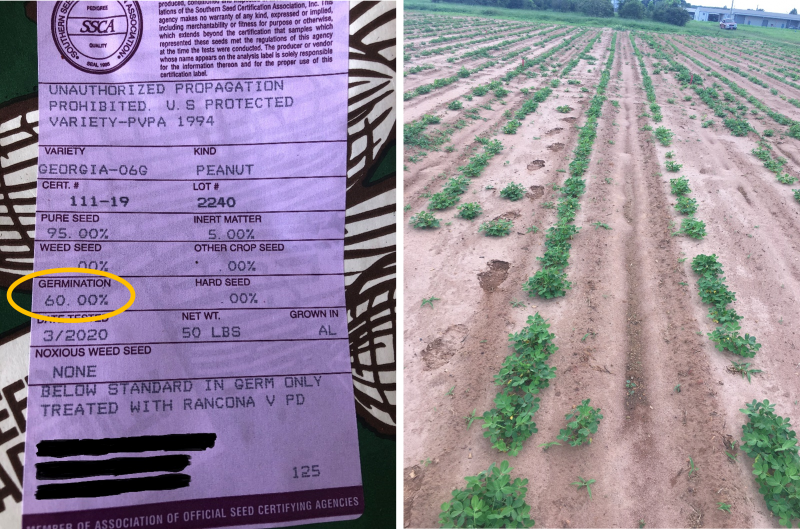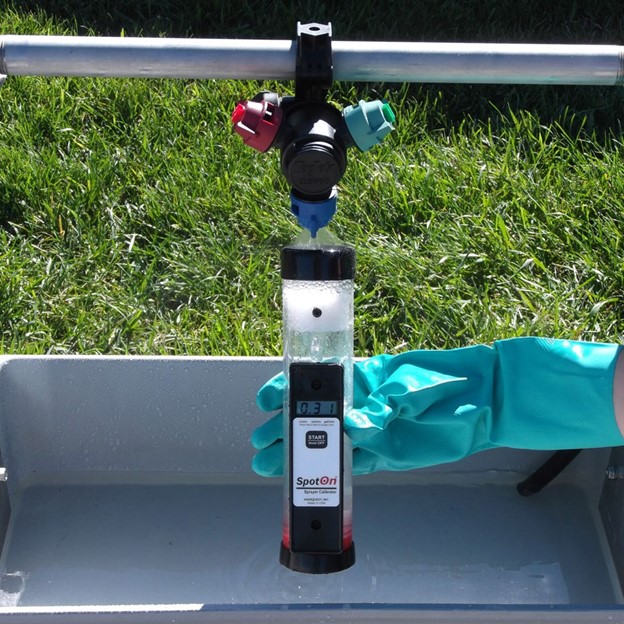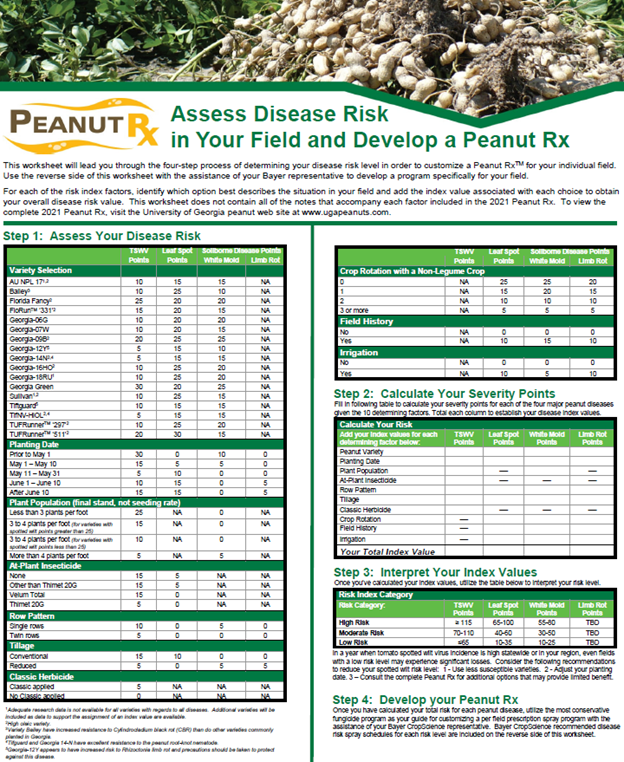Michael J. Mulvaney, UF/IFAS Cropping Systems Specialist, CCA
–
Check the germ rate of your seed
I was shocked last year to see so many skippy stands, because we didn’t check the germ rate. Many peanut fields had 2 plants/ft! At that rate, you’ve taken your yield hit at planting. Remember, peanut yield declines occur at stands ≤3 plants/ft on twin row peanut, and <2.5 plants/ft on single rows. A reminder about that in this article: Stand Issues – Should You Replant Your Peanut Field?
Check germ rate, then adjust your seeding rate accordingly. At the very minimum, look at the germination rate on the seed bag label.
I don’t expect you to do a rag doll test, but it’s easy to do if you want a current germ rate. Simply put 100 seeds in a wet paper towel. I put 10 rows of 10 seeds each, to make counting easier. Roll them up, but them in a zip lock baggie, and keep them at room temperature for a 5-7 days. Open them up, and count the number of germinated seeds. That’s your current percent germination.
Suppose your germ is 80%, and you want 5 plants/ft. All you do is divide 5 by 0.80 to get the new seed rate based on pure live seed (6.25 seed/ft). Germ rates of 60% were common in this area last year. If your germ rate was 60%, your seeding rate should be 5/0.60 = 8.3 seed/ft. Yes, this is a lot of seed, and comes at extra cost, so balance seed cost with yield gains. There is also a concern that such high seeding rates with low germ seed can cause seed rot to run down the furrow, so we don’t want to push seed rates too high. Strive to get at least 3 plants/ft.
–

Figure 1. Check the germ rate of your seed. At a minimum, look at the seed tag. If your germ is low, adjust your seeding rates accordingly to avoid yield loss at planting. Credit: Mike Mulvaney, UF/IFAS
–
Calibrate your sprayer
Are you fighting resistant weeds? If so, don’t complain about escapes if you didn’t calibrate your sprayer: Sprayer calibration is especially important for you. I even created some simple sprayer calibration tables you can keep in the cab. It takes all the math out of it. The “SpotOn SC-1 Sprayer Calibrator” sells for about $160 and will tell you the flow rate of each nozzle in gallons/min (or other units if you prefer). Everyone hates calibrating. Use these tools makes it easier.

Figure 2. Calibrate your sprayer now to avoid weed escapes later. This device will tell you the gallons per minute from each nozzle. Credit: SpotOn SC-1 Sprayer Calibrator
–
Consult PeanutRx
Peanut disease is guaranteed. You know the history of your field, and you know which diseases are most prevalent on your fields. Fight those diseases now by planning your variety, planting date, plant population (see point 1 above), and other management strategies. Planning now pays later. An online tool for PeanutRx is available through the University of Georgia: UGA Peanut RX, and there are printer friendly versions for each of the major chemical companies for guidance on specific products: 2021 Peanut Rx Cards
–
Plan your in-furrow applications
As Bob Kemerait, UGA Peanut Pathologist, always says, “The moment you close that furrow, you’ll never have the chance to go back.” This is your one best chance to combat nematodes. Make sure your peanut has a seed treatment on it. Plan on using Thimet, if you’re at risk for Tomato Spotted Wilt Virus. Consider in-furrow azoxystrobins for stand issues, Proline for cylindrocladium black rot, and Velum or AgLogic for nematode fields. Remember, in-furrow fungicides are not a replacement for seed treatments. New fields, or fields that flooded or went dry may benefit from inoculants. Since this is the only chance you’ll have to make many management decisions, it deserves thought.
Also, I do not recommend any in-furrow fertilizer on peanut. Remember, seedlings are sensitive, and ammonium is toxic to seedlings.
- Four Early-Season Lessons from 2020 Peanut Production - April 9, 2021
- Sprayer Calibration Tables – Calibration Made Easy - October 30, 2020
- Stand Issues – Should You Replant Your Peanut Field? - May 15, 2020

